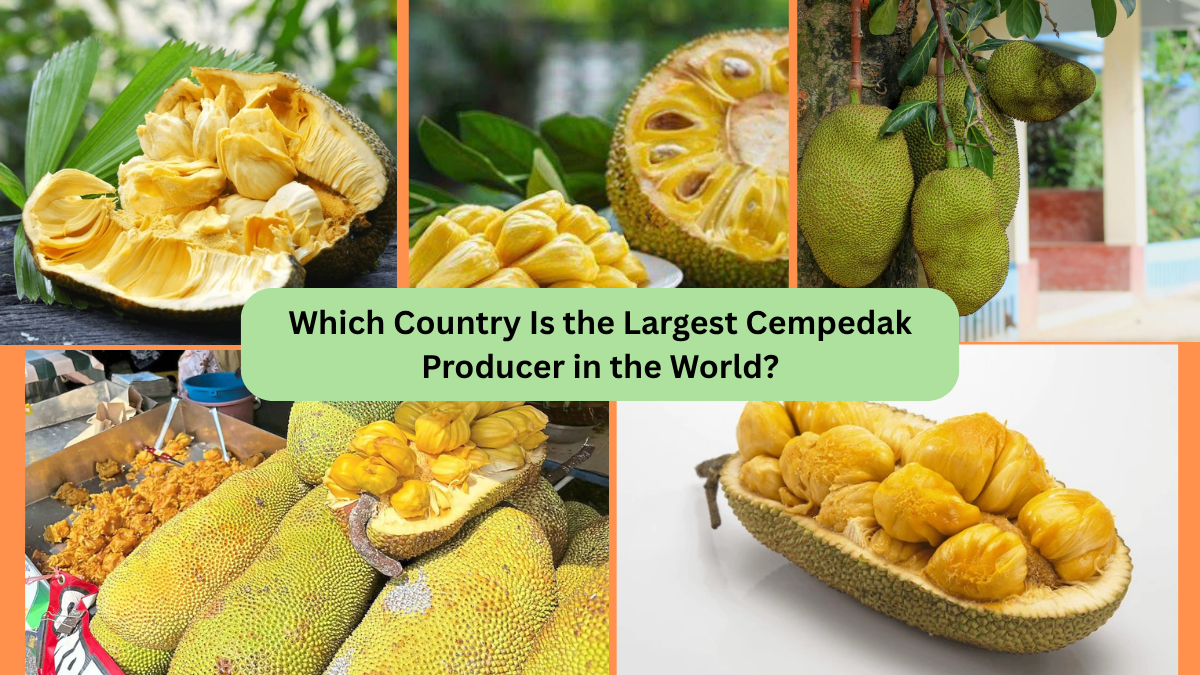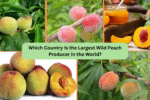Cempedak, a tropical fruit native to Southeast Asia, is closely related to the jackfruit but possesses its own distinctive flavor, aroma, and cultural significance. Characterized by its elongated shape, spiky skin, and rich, sweet flesh with a musky fragrance, cempedak has remained a beloved delicacy in its native region and beyond. While its cultivation is spread across several tropical countries, one nation distinctly stands out in both volume and cultural integration of this unique fruit. In this detailed article, we’ll explore the origins, cultivation, global distribution, and identify the world’s largest cempedak producer.
What Is Cempedak?
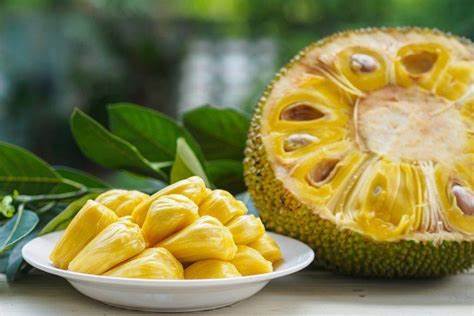
Cempedak (Artocarpus integer) is a member of the Moraceae family, which includes jackfruit, breadfruit, and figs. It’s an oblong or oval-shaped fruit, typically ranging from 20 to 40 cm in length, with a spiky yellowish-green exterior. The flesh inside is golden-yellow to orange, aromatic, and sweet, often compared to a mix of banana, durian, and mango flavors.
This tropical fruit is typically eaten fresh, fried in batter, or incorporated into traditional desserts and savory dishes. Its seeds, like jackfruit, can also be boiled or roasted and consumed as a snack.
Historical and Regional Cultivation of Cempedak
Cempedak’s origins trace back to the dense rainforests of the Malay Peninsula, Borneo, and Sumatra. Over centuries, it became a staple in traditional diets and agricultural systems in Southeast Asia. The spread of cempedak has largely remained within this region due to its specific climatic requirements and short shelf life, which complicates international transportation.
Today, cempedak is cultivated in countries such as Malaysia, Indonesia, Thailand, Brunei, and parts of southern Philippines.
The Largest Cempedak Producer in the World: Malaysia
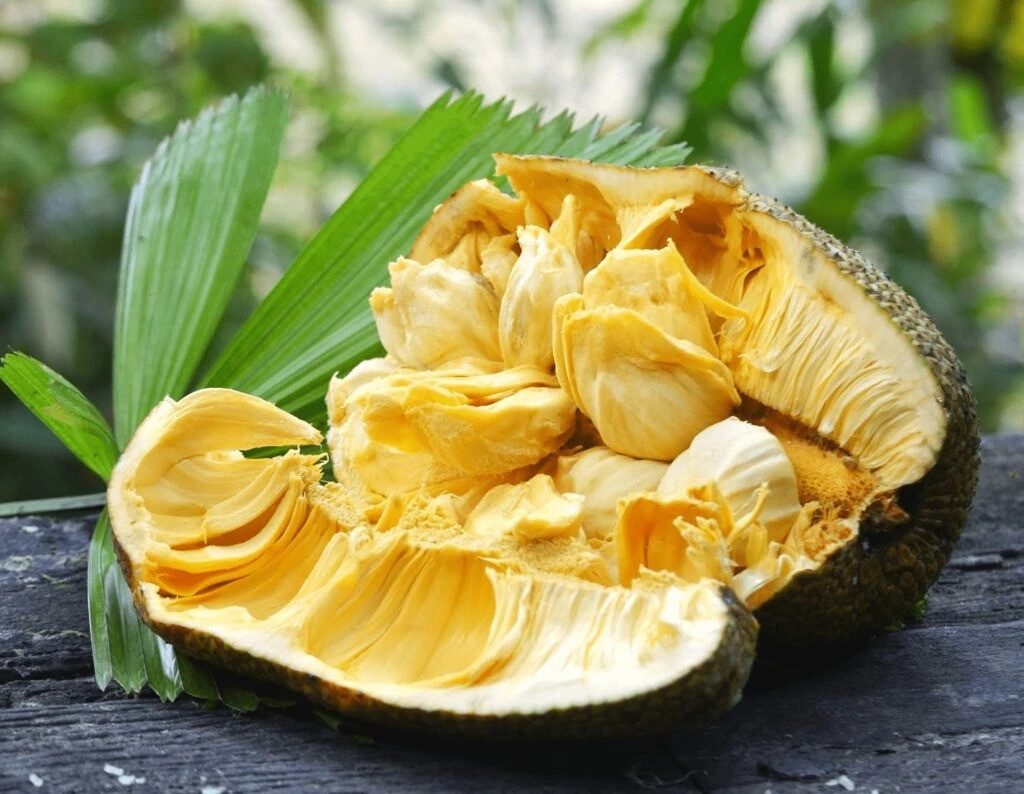
Malaysia holds the title of the largest cempedak producer in the world. Thanks to its native origins, favorable climate, and cultural attachment to the fruit, Malaysia has nurtured large-scale cempedak cultivation, especially in states like Pahang, Johor, Selangor, and Perak.
Why Malaysia Leads Cempedak Production
1. Native Heritage and Agricultural Expertise:
As one of the native regions of cempedak, Malaysian farmers have generations of experience cultivating this fruit. This traditional knowledge combined with modern agricultural practices ensures high yields and fruit quality.
2. Ideal Climate and Soil:
Malaysia’s hot, humid tropical climate with consistent rainfall throughout the year creates perfect growing conditions for cempedak. The rich, well-drained soils in the lowlands and foothills contribute to vigorous tree growth and abundant harvests.
3. Strong Domestic Consumption:
Cempedak is a cherished part of Malaysian cuisine. From being fried in batter and sold at street stalls to appearing in festive dishes and desserts, the fruit enjoys widespread popularity, fueling continuous cultivation.
4. Localized Commercial Markets:
While Malaysia doesn’t export large volumes of fresh cempedak due to its perishability, the country has developed a domestic market for processed cempedak products, including frozen pulp, chips, and desserts. This local demand ensures economic sustainability for farmers.
Other Notable Cempedak Producers
Although Malaysia dominates global production, several other Southeast Asian countries actively grow cempedak:
Indonesia:
Indonesia, home to vast tropical rainforests, is a significant cempedak grower. Particularly in Sumatra, Kalimantan (Borneo), and Java, cempedak is both cultivated and foraged from wild trees. It features prominently in Indonesian cuisine, often served fried or made into traditional sweets.
Thailand:
While not as dominant as Malaysia or Indonesia, Thailand grows cempedak mainly in its southern provinces. The fruit occasionally appears in local markets and traditional recipes.
Brunei and Southern Philippines:
These countries cultivate cempedak on a smaller, mostly domestic scale, where it’s valued for both consumption and cultural heritage.
Rising Popularity and Market Potential
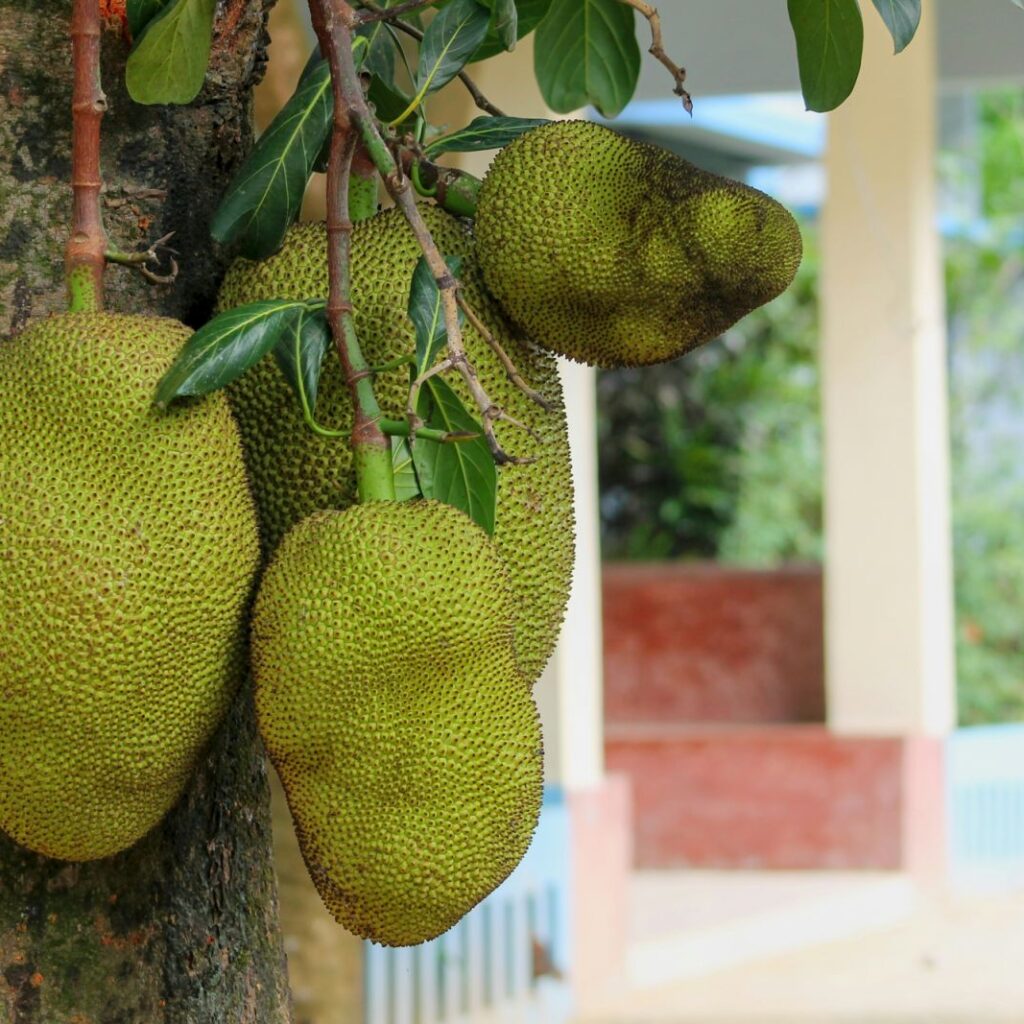
Although cempedak remains relatively unknown in Western markets, its unique taste and nutritional benefits are slowly gaining attention among tropical fruit enthusiasts and health-conscious consumers. Processed products like frozen cempedak, cempedak chips, and preserves are beginning to appear in international specialty markets.
Export challenges, mainly due to perishability and limited shelf life, restrict fresh cempedak’s availability outside Southeast Asia. However, increased demand for exotic and novel fruits presents growth potential for processed or frozen versions.
Health Benefits of Cempedak
Like its cousin jackfruit, cempedak is packed with nutrients and health-enhancing properties:
- Rich in Antioxidants: Its vibrant flesh contains carotenoids and flavonoids that help combat oxidative stress.
- High in Vitamin C and A: Strengthens the immune system and supports skin health.
- Good Source of Dietary Fiber: Promotes digestion and gut health.
- Contains Natural Sugars: Provides quick energy while being low in fat.
- Protein-Rich Seeds: Boiled or roasted seeds are an excellent plant-based protein source.
Cempedak in Culinary Culture
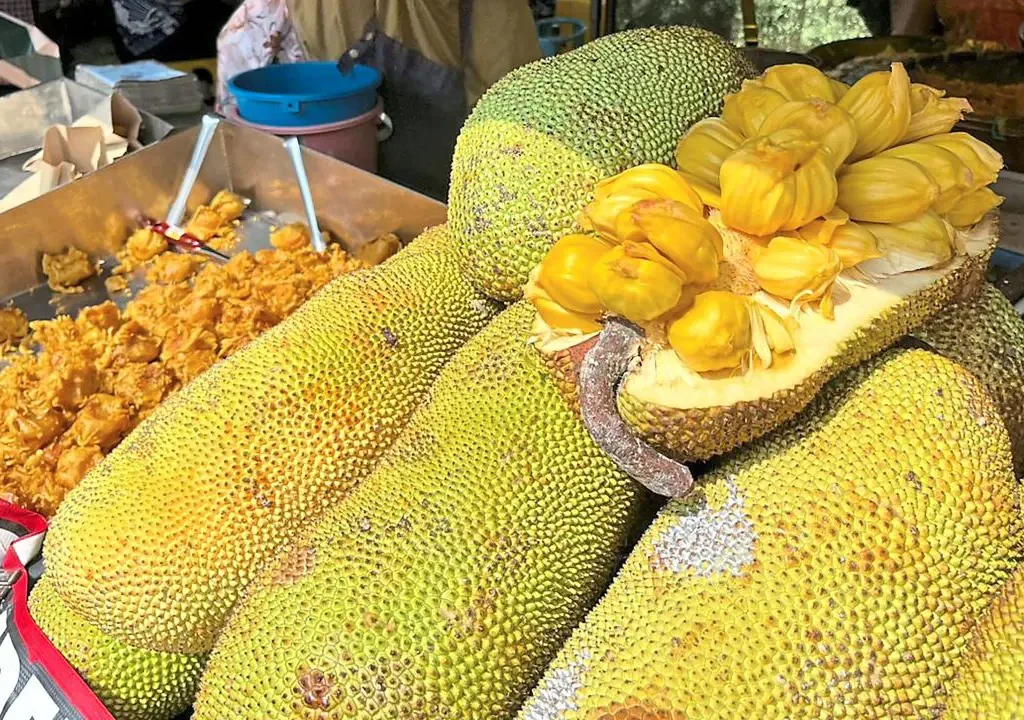
In Malaysia, cempedak is most famous for being deep-fried in crispy batter (known as “cempedak goreng”) — a popular street snack enjoyed for its caramelized sweetness and creamy texture. It’s also used in traditional kuih (desserts), jams, and sweet soups.
In Indonesia, cempedak is similarly enjoyed fried or cooked in coconut milk-based dishes. The seeds are boiled, roasted, or made into savory stews.
Challenges Facing Cempedak Production
Despite its strong domestic popularity, cempedak farming faces some challenges:
- Perishability: The fruit’s high sugar content and thin skin make it highly perishable, complicating transport and storage.
- Limited Export Capacity: The fragile nature of fresh cempedak limits its availability in international markets.
- Seasonality: Cempedak trees produce fruit seasonally, usually from June to August and December to February in Malaysia.
- Competition from Jackfruit: Jackfruit’s larger size and longer shelf life sometimes overshadow cempedak in markets.
Conclusion
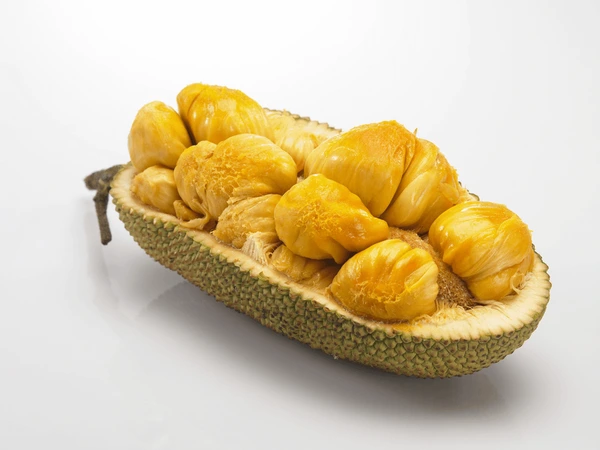
With its rich cultural heritage, ideal growing conditions, and deep-rooted culinary significance, Malaysia proudly holds the distinction as the world’s largest cempedak producer. While neighboring countries like Indonesia and Thailand contribute to regional supplies, Malaysia’s dominance in both production volume and market integration remains unmatched.
As global demand for unique tropical fruits grows, cempedak’s prospects are promising — particularly through processed products and culinary tourism. And though export limitations persist, this fragrant, flavorful fruit continues to be a cherished symbol of Malaysia’s rich agricultural and culinary heritage.
